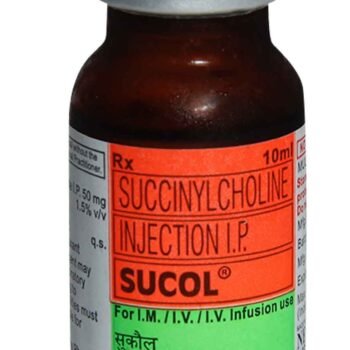SIDE EFFECTS OF CEFOPROX XP 1 GM INJECTION:
Superinfection; anaphylaxis; diarrhoea; local reactions; blood dyscrasias; rash, fever, pruritus; elevated transaminases and alkaline phosphatase. GI effects; pseudomembranous colitis; hematologic effects; hypersensitivity reactions; CNS disturbances; hypertension; chest pain; edema; moniliasis; rhinitis; dyspnea; hypotension; ileus; syncope; local Inj site reactions; rigors. Potentially Fatal: Pseudomembranous colitis; nephrotoxicity.
DRUG INTERACTIONS OF CEFOPROX XP 1 GM INJECTION:
Probenecid; aminoglycosides; vecuronium, methotrexate; oral anticoagulants; heparin. Potentially Fatal: Disulfiram-like reaction with alcohol. Nephrotoxicity with aminoglycosides and furosemide.
CONTRAINDICATIONS OF CEFOPROX XP 1 GM INJECTION:
Hypersensitivity to cephalosporins and β-lactamase inhibitors.
MECHANISM OF ACTION OF CEFOPROX XP 1 GM INJECTION:
Ceftriaxone interferes with the biosynthesis of the peptidoglycan component of the bacterial cell way by binding to and inactivating penicllin-binding proteins (PBPs). Tazobactam is a penicillanic acid sulfone derivative with β-lactamase inhibitory properties. It enhances the activity of β-lactam antibacterials against β-lactamase-producing bacteria. Distribution: Ceftriaxone: 98% bound to plasma proteins; crosses the blood brain barrier. Tazobactam: About 30% bound to plasma proteins; widely distributed to tissues and body fluids. Excretion: Ceftriaxone: Elimination half-life is about 8.7 hr; 33-67% removed as unchanged drug. Tazobactam: Removed mainly via kidneys with 80% of an administered dose as unchanged drug.
SPECIAL PRECAUTIONS FOR CEFOPROX XP 1 GM INJECTION:
History of penicillin allergy; lactation. Consider possibility of pseudomembranous colitis in patients who present with diarrhoea subsequent to the admin of antibacterial agents. Monitor prothrombin time in patients with impaired vit K synthesis or low vit K stores during treatment. Prolonged treatment may result in overgrowth of nonsusceptible organisms. Caution in patients with a history of GI disease, especially colitis. Discontinue treatment in patients who develop signs/symptoms suggestive of gallbladder disease. Not to be used in hyperbilirubinemic neonates, especially prematures.











Reviews
There are no reviews yet.